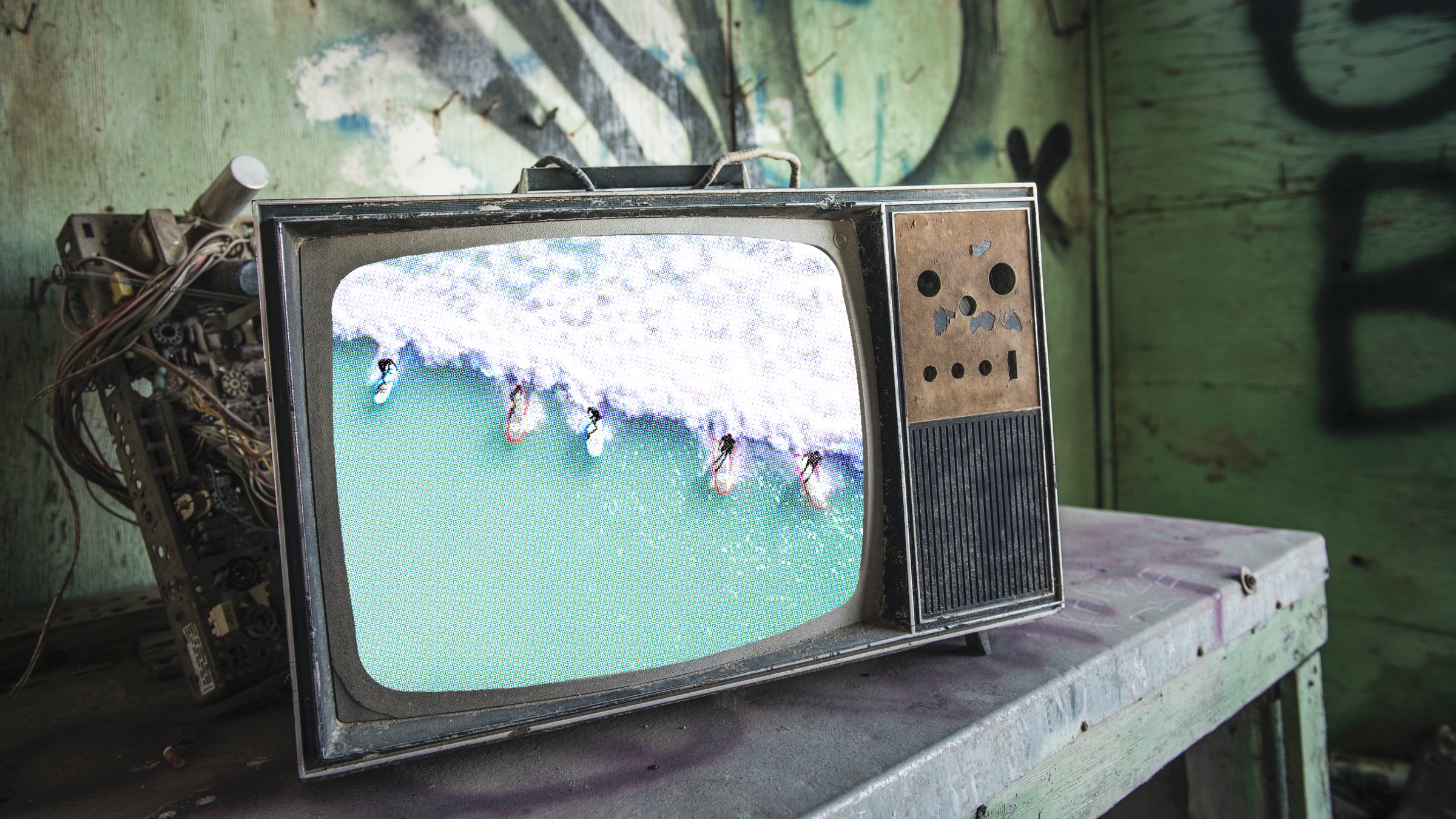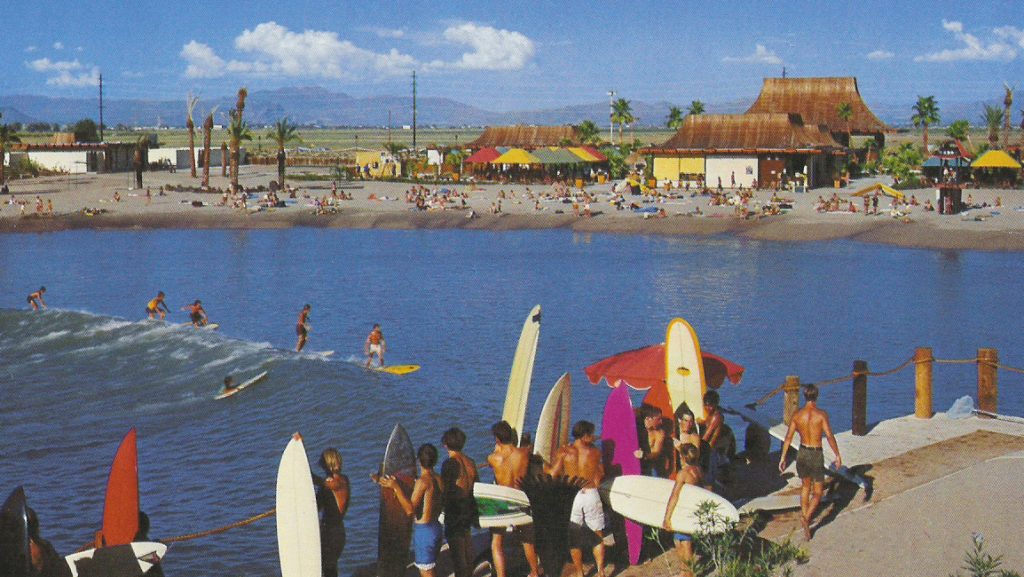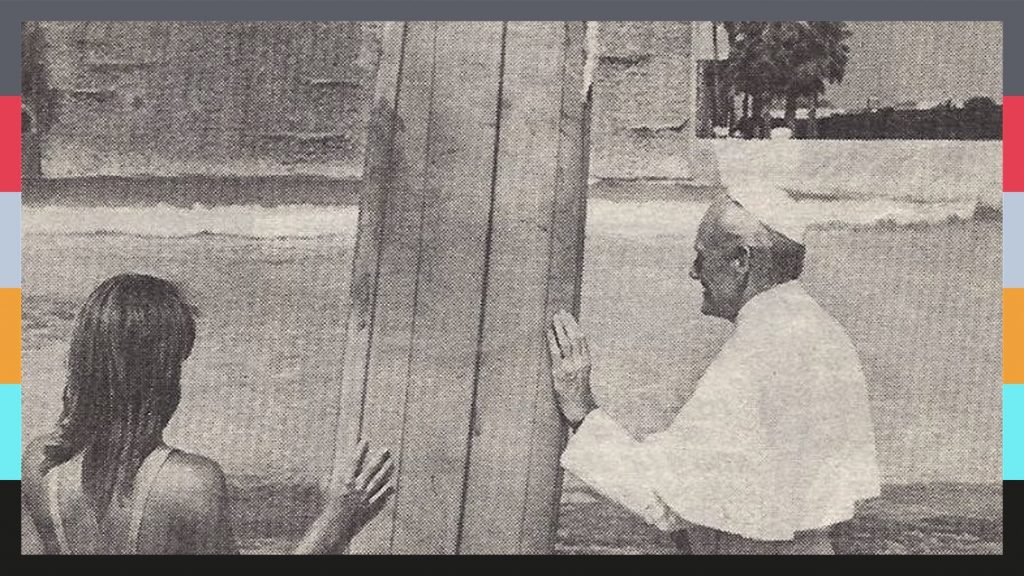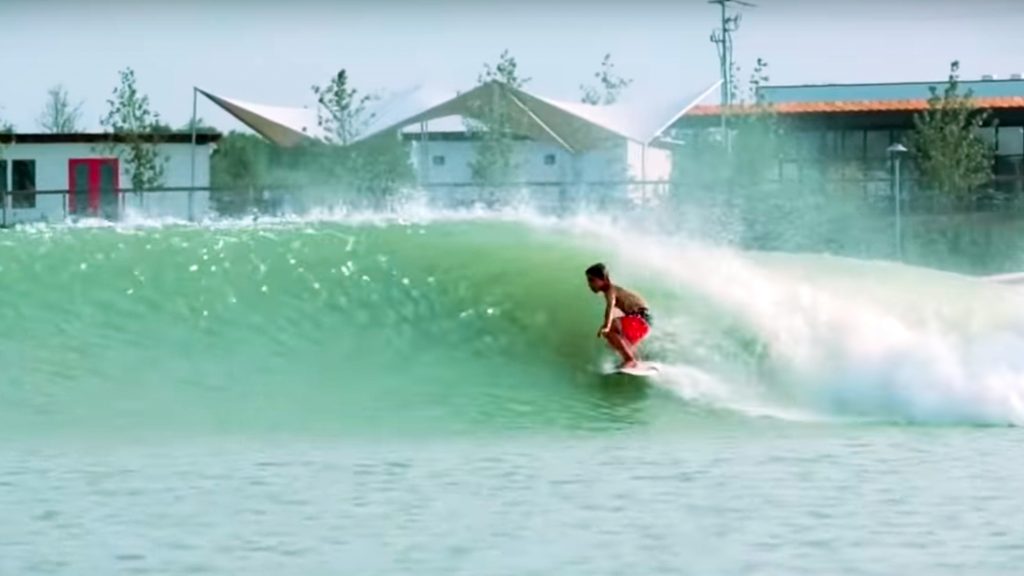The Dead (wave) Pool: What happened to the Big Three?

This is a very exclusive club. One for which you have to spend millions. And you don’t want to be in it. The qualifying barrier? Redundancy. Welcome to the Wave Pool Graveyard.
But were their projects out-and-out flops, or simply ahead of their time? Regardless, some have paid a hefty price for trying and tripping, but in the process, they’ve inadvertently inspired future generations of wave-making dreamers and engineers.
These now-closed, future inspirations did have their day in the sun. Stoking surfers and beginners, often for decades.
Seagaia Ocean Dome – Miyazaki, Japan
What was once was of the world’s largest indoor water parks (and was also home to the largest retractable roof) ended up as one of the costliest piles of rubble. Opened in the heady neon days of 1993 the Ocean Dome had 12,000 square meters of special non-stick sand, 13,500 tonnes of chlorinated water, and some fine waves. No dribblers here, proper fast-to-your-feet peelers which offered legit coverups.
As part of the Sheraton Seagaia Resort, the Dome also offered the kind of theatrical storytelling only dreamed up by someone who builds a no-stick sand beach. The shows were a mix of Polynesian dance, folklore, fabrication, and featured jugglers, dancers, and “live” surf demonstrations. But the performance the world remembers most is the story of the French prince Sabu, played by Aussie pro surfer Matthew Pitts. Matt would enter the wave pool adorned in a white unitard, blue shoulder pads, and a medieval gold helmet festooned with a tinted visor to rescue the kidnapped princess.
Not only was he paid to surf some waves en route to rescuing the princess, but he was also required to wipe out – onto a very shallow concrete bottom – and perform a deft tuck-n-roll to avoid concussion. Part surfer, part stuntman, unitard-clad Matt earned $90 for a 45-minute display. “It was an awesome gig. The waves at the pool were really good,” says Matt, “You had to be a pretty good surfer to even ride them.”
And the wave was chlorine quality reckons Matt. “There was a left barrel and a center peak along with a right barrel in section one. Section two had a long left from one end of the pool to the other followed by a similar right.”
The Dome was part of an 850-acre resort that also hosted five hotels, several golf courses, a botanical park, and a zoo. But it was too much of a good thing. Visitor numbers dropped, particularly outside of holiday seasons, and the Dome’s upkeep costs were eye-wateringly expensive. “It cost way too much to run. Just the upkeep and the electricity alone was huge,” says Matt.
Visitor numbers peaked in 1995 with 1.25 million people coming through the doors. The water park was closed in 2007, then after almost a decade of being a very expensive pond, opened again for one year, before being closed for good and demolished in 2017. Ocean Dome is in the Guinness Book of Records as being the most costly bankruptcy in history.
Big Surf, Arizona

When it comes to highlights for any sports and leisure arena, it’s hard to beat being blessed by the Pope. In 1987 Pope John Paul II rocked up to Big Surf, after holding a mass at Arizona State University, and promptly posed with a teenage lovely and a longboard. Sure, he didn’t paddle out, though would he have needed a board?
This is one of many notable occurrences in the 50-year lifespan of Big Surf.
The whole concept was envisioned and engineered by Phil Dexter, a surf dreamer and former U.S. Navy sailor who served in World War Two.
Big Surf’s lagoon spanned 2 1/2 acres and 50,000 gallons of water were displaced each time rideable waves were created. A baffle regulated the flow of water and a submerged gate released it into the lagoon, creating unbridled stoke for surfers.
Originally financed in ‘67 by hair company Clairol, as a tie-in to promote their real gone ‘Surfie’ look – it turned out to be a bust for them, but a boon for everyone in Arizona. By the time the pool was up and running, 2 years later, surfers (and the poor deluded wannabe-surfer dudes and dudettes wanting to craft their locks as such) had moved on from bushy blond hairdos to the long, unkempt hippie hair. Clairol also sponsored and supplied wax for the boards – a grand gesture until the promo wax began melting in the Arizona summer heat.
With the surf, beach, and palm trees, it was idyllic. Impressed by the realism of Big Surf, reporter Robert Allison of the Phoenix Gazette wrote in 1969: “The only thing it needs to duplicate a penned-up portion of ocean beach is a few old beer cans and some tar on the sand.”

More than just a touchstone to a surf and beach culture many miles away, it spawned its scene complete with local rippers, a plentiful and never-ending supply of beginners, beach dwellers, groms gripped with surf fever, and hosted an intricate surf-focussed social fabric as full and as vibrant as any beach culture, anywhere in the world.
Big Surf rules saw the number of surfers capped to eight per wave. Each wave would have a right and left where two surfers on each side would have a chance to get the best rides. The four surfers in the middle were relegated to a white water ride straight to the beach. Naturally, this created a desire to obtain an outside position, so that you would get the opportunity for the best possible ride.
Barry Finnerty, who also grew up with Big Surf as the nucleus of his grommet life said Big Surf was affectionately referred to as The Flush by locals.
Surf sessions were at one-hour intervals and were two times a day midweek and three times on weekends.
“You would wait in line, like a Disneyland ride, on either side of the lagoon by the back wall and traverse down a set of stairs,” says Barry. “Four surfers were allowed from each side per wave. On any given day there might be 20-30 surfers, so you would be lucky to get 3-to-5 waves each session.”
The doors finally closed this year. It looks as if Big Surf was a Covid casualty, a long hiatus hastened its demise, and the rapidly aging tech didn’t help. No amount of software updates was going to save it. Big Surf was unashamedly of an analog era.
NLand – Austin, Texas

What’s the next best thing to owning a beer company? Owning a wave pool of course. And if you own one of each, happy days. Bankrolled by Coors beer heir, Doug Coors, the 14-acre pool was divided into two sides: Experienced surfers with bigger waves on one side, while kids and beginners rode the small ones on the other. Across the pool, a snow plow-like blade was dragged underwater, generating waves with up to 30-second rides in the Wavegarden design.
NLand overcame several obstacles before opening. They boxed with county officials who wanted to strap the 14-acre lagoon with the same regulations as a public swimming pool. Construction also hit a snag when a tear in the liner flooded nearby neighbors, many of whom weren’t happy to see a wave pool in their neighborhood.
NLand found mixed reactions when opening. Many surfers loved the wave but felt it wasn’t challenging enough. Others, mostly newbies, espoused what a fun setup the whole enterprise was.
The park can hold nine football fields of water split in two, right down the middle, vertically, by a pier. On the left, as you look down the pier, is the West Bowl. On the right is the East Bowl. Underneath the pier is where all the technology and magic happened. A pulley system pulled (pushed?) an underwater plow, which created the wave.
Surf journalist Scott Bass who’s surfed NLand says, “Would I do it again? Probably. Austin is a cool place. Great food, eclectic music, there is plenty to do and see. Is the wave Lances Right? No, of course not. An open mind is required. A free spirit. NLand Surf Park offered fun, exciting, rippable stomach to chest high waves. What’s not too like?”
A blip in the history of wave pools, it opened in 2016 and shuttered in November 2018, with Coors selling to Kelly Slater Wave Co. Since then, there has been plenty of speculation and rumors about the future of the pool, but there’s been no official news. Currently, the park sits abandoned, desolate, and as dry as an Aussie in Amish-land.
Related Coverage
